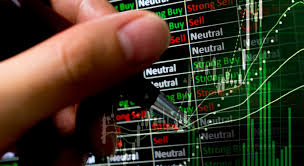In some ways, FX indicators are beneficial. They work as tools integrated into and connected across payment systems to give traders a distinct and often concise market outlook. They might view the present situation of a monetary pair or a review of past data in long or short-term projections. There are several helpful forex indicators, including some that are discussed below.
What are the best indicators?
Many investors have their preferred technical analysis, and these indications form part of the typical approach of these traders. There is no actual best indication regardless of what you would hear, as the style, the character, and the mentality of each trader are distinct. In other words, when it comes to professional analysis, there are many must-know indications.
Averages of movement
Moving averages are leading technical indicators created particularly to identify price breaks and the general market trend. You take the shape of a chat line, which is the mean value for a forex pair over a fixed period, such as 14 or 200 days, measured by average or average.
This gives the trader an overview of the currency pair’s general trend, but it should be remembered that moving averages within a short time frame may respond faster to price movements on the market.
Oscillators
FX oscillators signal when the market hits a limit, and the probable consequence is a counter correction of the current trend. If the price rises, for example, over-purchased, analysts say, the price stays constant or slides little as traders seek to enhance their gains. Professional entrepreneurs enter the market, increasing the expenses if a negative corrective occurs. On the other side, an oversold market is causing a response or a positive correction in the other way. In general, buying over-sold and selling at the futures at the overbought zone is preferred.
Stochastics
Stochastic oscillators are meant to show overbought and oversold areas, but stochastics are also indicating potential market reversals. The stochastics are available in several variants, but the most often used type is the sluggish stochastic. At the end of a chart, it consists of two trend lines of 0 to 100.
Because their results are accurate, stochastics is a popular indicator for many traders. Stochastics have the potential to enable investors of all skills to identify appropriate entrance and exit positions, both by experienced traders and novices.
Retracing lines of Fibonacci
Fibonacci trace lines are a quantitative analytics approach that looks for support or resistance levels on trading instruments as part of a whole series of tools based on Fibonacci sequences. The idea is simple: The markets respond or track tiny elements of a bigger shift, which are predictable. Thus the retracing of Fibonacci is many unbroken patterns. Traders using this strategy utilize Fundamental ratios of 23.6%, 38.2%, 50%, 61.8% and 100% to establish the target pricing or stop-loss ratio.
Index of relative force
Like stochastics, the RSI is an oscillator used to identify market circumstances overfunded or overpayment. The RSI index is frequently called RSI. For traders who prefer cheap buy and sell high, this is very beneficial as values range from 0 to 100. Zero is seen to be too much, whereas 100 are considered over-sold.
Bollinger band
Bollinger bands are a simple notion and are thus commonly utilized, a volatility channel usually included in lists detailing forex indicators. If the price of a currency pair is above a moving average, plus some amount, the beginning of a trend is indicated. Bollinger Band values are usually 2 or 2.5 standard deviations from a single average movement.
Each time frame contains an indicator, and variables may be modified and adapted to a trader’s taste. Each trader is unique and may be utilized in several ways with all needles. One indication is seldom a flawless signal, but it may frequently put you on the right side of the forex markets, taking into consideration some of the other indicators.



